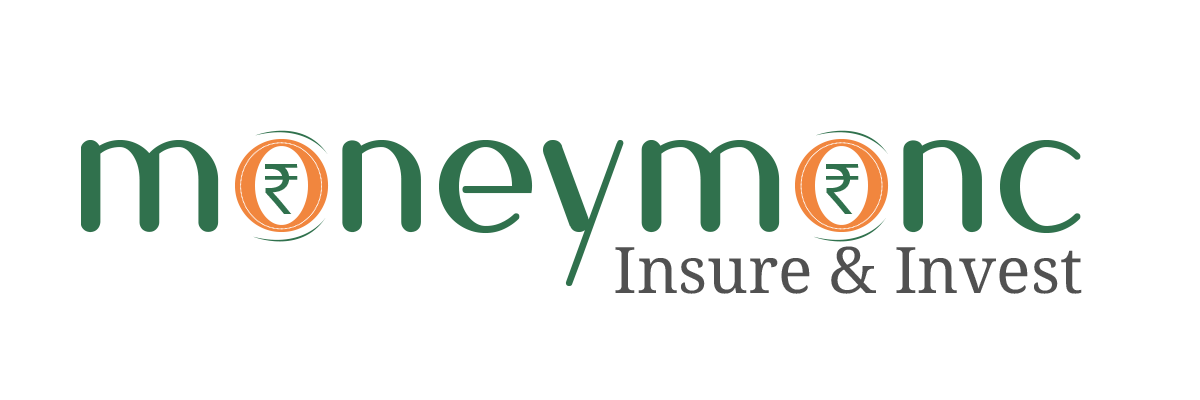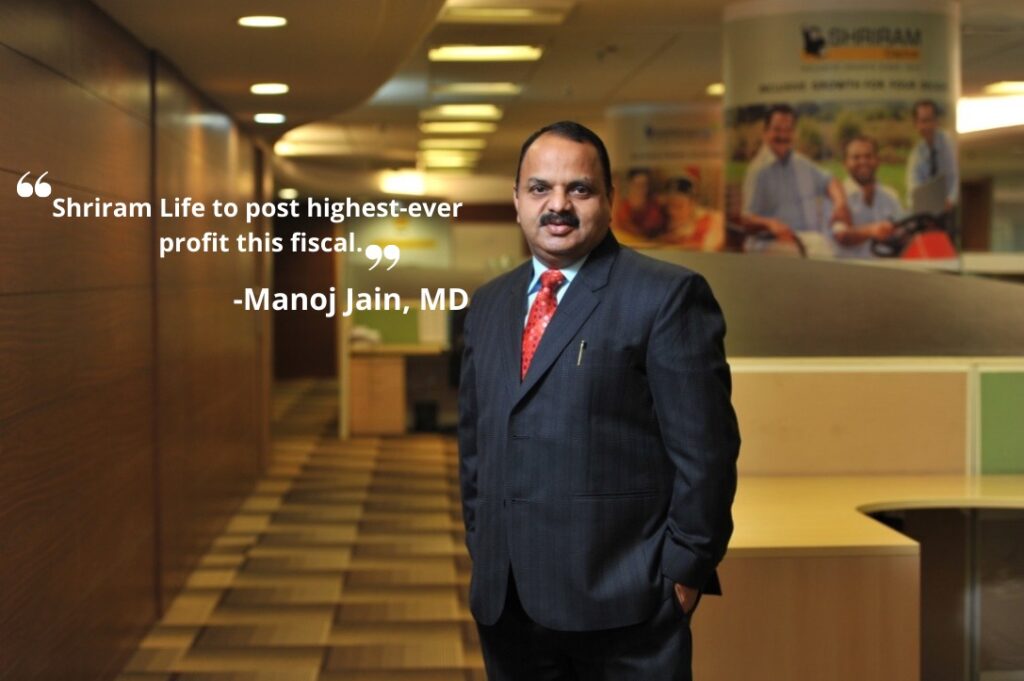Shriram Life Insurance is well known for its reach in India’s hinterland and tier 3 and tier 4 towns. About 45 percent of its policy buyers are from rural areas and the company has the lowest average premium in the industry at about Rs 18,000. In a year adversely impacted by COVID-19, Shriram Life is set to report the highest profit-ever. How did it become possible? The company’s MD, Manoj Jain, talks about the impact of the pandemic, digitalisation, ULIPs and its profitability in a free-wheeling interview. Edited excerpts:
1) How has the pandemic impacted the life insurance business?
There was a complete lockdown for 45 to 60 days after the first lockdown was announced on March 24. Even though the insurance industry was allowed to work during the lockdown, there was a lot of uncertainty till the first week of May. So we lost two months — April and May. But if I look back now, we are closing February; our growth is flat if you compare our business vis-a-vis last year. That is one way of looking at it. The other way is that for a period of two months we have not done anything. So, whatever we have achieved has been done in the last nine months. So from that angle, there is a growth. And I am quite optimistic that March will be one of the best months because all those things are behind us. At the industry level too, de-growth of 5 percent is expected for the life insurance sector. So either the industry will be flat or there will be marginal de-growth.
2) How has the shift to digitalisation been for Shriram Life?
The pandemic has given a lot of alternate options to all of us when it comes to digital. We started the journey of digitalisation around three years back because we realised going forward brick and mortar offices may not work. And we are a frugally managed group and life insurance company. If you look at us, in terms of number of policies, we are not small, we are in the top 6 or 7 but when it comes to premium, we are at the 15th or 16th spot as our penetration is in tier 3 and tier 4 towns. On the number of policies, close to 45 percent of our policies come from rural areas and our average premium is the lowest in the industry. In the private sector, the average premium is around Rs35,000 to Rs45,000 and we are at around Rs18,000.
To that extent, digitalisation was very much needed as when I am getting lower premium from the customer and more transactions, we have kept our transaction costs low. And going digital was the only solution. So 2.5 years back we had outlined our digital strategy.
I am very happy that in the last 6 or 8 months, almost 95 percent of our new business is through mobile apps including the entire process of logging in and proposal form.
Customers are also happy that they need not go to the branch as they close at 6 pm. In the app, they can transact in the night or on a Sunday. We have automated our sales processes and have done a lot of work on digitalisation. We felt our agents will take some time to adopt the new way but we have been proven wrong. In a state like Bihar, we are selling in 400 centres and with digital we can sell anywhere, there is no geographical boundary. So, the adoption of technology was good and fast.
3) According to the IRDAI Consumer affairs booklet, the life insurance industry has seen a fall in complaints in FY20 particularly related to mis-selling. What has led to this change?
The private life insurance industry is now completing 20 years. Although we have not reached where we had originally planned because our insurance penetration levels are still quite low but now customers are more aware. Our sales processes are also mature and fine-tuned. There has been a product-shift; a company like us is selling 45 percent of term plans — not pure term plans but it’s a return of premium plans.
For instance, for truck drivers we sell a small protection plan. It’s a term plan where at the end of the term if there is no claim, he will get his premium back. So it’s not a saving plan and 45 percent of our business comes from there.
The big shift that we have seen is customers moving towards guaranteed plans or non-participating products.
As a customer, when you pay a Rs1 lakh premium every year, from the 11th year, we are guaranteeing the customer he will get Rs1.5 lakh etc. So there is no chance of mis-selling. Complaints of mis-selling have really come down and I feel it should come to zero. At the end of the day, financial business is a business of trust and at Shriram we take it seriously.
4) Life insurance surrenders have come down in the industry and the persistency ratio of life insurers has also seen an improvement? What are the reasons behind this?
At the industry level, 13 month persistency is at 70 percent. I remember in 2012-13 our persistency was 30 percent. Now we have moved to around 65 percent. We are working in a target segment where the customer does not have the luxury to keep money in his bank account. Since they are the customers from tier 3 and 4 towns, they have to make a choice between paying insurance premium and fees for the child. In that segment, we are able to do 65 percent persistency, but we are working on improving it.
We have made about 70 percent of our new business NACH mandatory. So renewal premium payments are made automatically. We have started using artificial intelligence (AI) and have done some work on customer propensity. Because in this segment, we really don’t have data to analyse, but whatever we have, it is showing results. Even a single policy if it is getting lapsed, we are keeping a track.
5) ULIPs, as a category, have undergone significant reforms but the industry has seen a shift from the product category.
ULIP plan is good for the customer who understands the stock market and is looking for a long term view. I am quite bold in this. If someone is looking for a short-term view of 3 year, 4 year or a 5-year view, I don’t think he should come to ULIP.
If somebody is looking for 10 years, 15 years or 20 years duration then nobody can match the return which insurance companies are giving on ULIPs.
My own personal big investment – I bought a policy in 2008 – and I was looking at it last week. It has given around 16% tax free return; even with markets at the peak even if markets cool down also if I get 12% tax free. But if surrendered in 2013, I would get marginal return
It’s not that the life insurance industry has completely shifted, but there is a segment of customers especially the companies who are focussing on bancassurance and ULIPs are selling. But in overall percentage, yes, it has come down and for all the good reasons because when a customer comes to an insurance company, he wants his capital to be protected. Above that capital protection if he is getting a reasonable return then he is quite happy. But if he is losing his principal, then his entire confidence gets shaken.
6) How have the Falling interest rates impacted Shriram Life?
For an insurance company, it is a long-term contract and all insurers have to invest 85 percent in government securities and bonds. In terms of asset liability mismatch, the falling interest rate scenario puts pressure and poses a big challenge for us, especially when we have a guaranteed product and these are all close-ended products. When we launch the product and we see there is a 100 point or 150-point fall in the yield, we close and again re-launch it.
7) How do you see industry moving post the pandemic in terms of growth and return to profitability?
A company like us, will have an all-time high profit this year. The reason is pandemic has given a lot of cost rationalisations, which we have never thought that we could achieve. Like we have around 400- 500 centers across India. We went back to the owners and sought a rent reduction. A big amount we were spending on travelling, and if you look at the last 12 months, hardly any travel and in-person meetings have taken place. And on top of it, digitalisation has helped us in reducing the backend processing cost.
Almost 40 percent of our portfolio comprises truck drivers. So during the lockdown, vehicles were not there on the road. So there were not many accidents and our claims have come down during the period.
All this has added to our profitability, and this year so we will have all time high profit since our inception.
8) Do you expect digitalisation to continue?
To be very honest, while we have moved to digital, life insurance is always sold one-to-one. Customer interface is very much required as I come from rural India and customers get great satisfaction by seeing a brick-and-mortar office. So, my personal feeling is the kind of segment that we are operating in, it can be debated whether the meeting can happen only online. There needs to be conversation, comfort, there needs to be a face in terms of the agent who is selling; what he’s doing. And that is happening. In almost 90 percent of our business, that one-to-one conversation is taking place.
But the physical collection of paper and travel to the branch has stopped because everything is now there on the app. Even IRDAI has allowed us to send e-policy to the customer. We are still sending a physical copy because in the segment we operate, many customers want to see the physical document.
(Deepa Nair is a Mumbai-based journalist specialising in finance and international affairs.)


